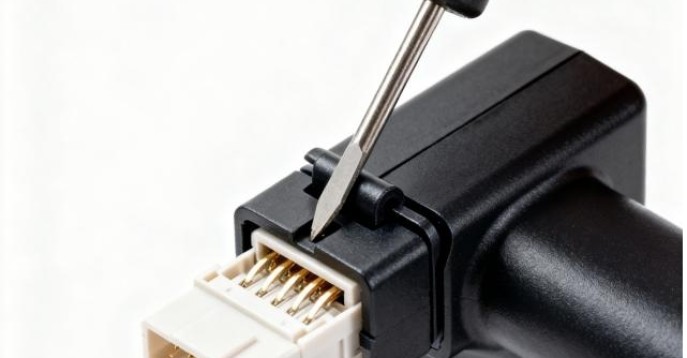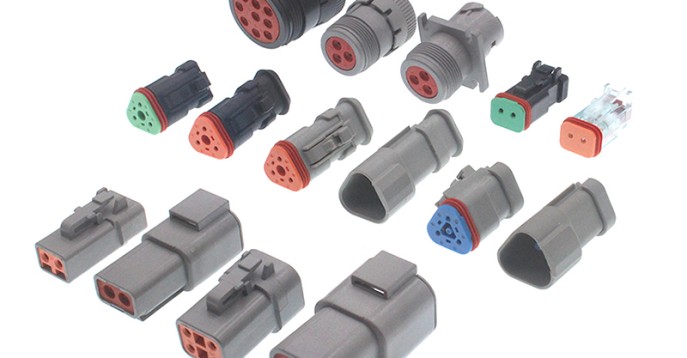In the early days of the development of new energy vehicles, DC motors have become an indispensable mainstream product for new energy vehicles due to their advantages such as easy control, good speed regulation performance, and low cost. However, these advantages are accompanied by inconvenient and reliable after-sales maintenance. Poor performance, service life does not meet the requirements and other defects.
With the development of technology, the DC motor has also fulfilled its mission and is gradually replaced by the AC motor mentioned above, especially the permanent magnet synchronous motor.
Definition of DC motor: A DC motor (synchronous machine) converts DC electrical energy directly into mechanical energy, or a rotating electrical machine that converts mechanical energy into DC electrical energy. A DC motor consists of a stator, a rotor and a steering gear.
The working principle of DC motor:
The working principle of the DC generator is to convert the AC electromotive force induced in the armature coil into a DC electromotive force when it is drawn out from the brush end by the commutator and the commutation effect of the brush.
The direction of the induced electromotive force is determined according to the right-hand rule (the magnetic field line points to the palm of the hand, the thumb points to the movement direction of the conductor, and the direction of the other four fingers is the direction of the induced electromotive force in the conductor).
The direction of the force acting on the conductor is determined by the left-hand rule. This pair of electromagnetic forces forms a torque acting on the armature. This torque is called electromagnetic torque in the rotating electrical machine. The direction of the torque is counterclockwise, trying to make the armature rotate counterclockwise. If this electromagnetic torque can overcome the resistance torque on the armature (such as resistance torque caused by friction and other load torque), the armature can rotate counterclockwise.
The part of the DC motor that does not move when it is running is called the stator, also known as the main pole. The main function of the stator is to generate a magnetic field, which consists of a machine base, main magnetic poles, commutation poles, end covers, bearings and brush devices.
The part that rotates during operation is called the rotor. Its main function is to generate electromagnetic torque and induced electromotive force. It is the hub for energy conversion of the DC motor, so it is usually called the armature. directional device and fan etc.
The commutator is made up of many copper sheets, using mica sheets as insulation. The function of the commutator is to commutate the current of the rotor in time, and convert the direct current input from the brush to alternating current.
DC motors can be divided into the following types according to different excitation methods.
The excitation method of the DC motor refers to the problem of how to supply power to the excitation winding, generate the excitation magnetomotive force and establish the main magnetic field. According to different excitation methods, DC motors can be divided into the following types.
Separately excited: The field winding and the armature winding have no connection relationship, and the DC motor that supplies power to the field winding by other DC power sources is called a separately excited DC motor. Permanent magnet DC motors can also be regarded as separately excited DC motors.
Shunt excitation: The field winding of a shunt excited DC motor is connected in parallel with the armature winding. As a shunt generator, the terminal voltage from the motor itself supplies power to the field winding; as a shunt motor, the field winding and the armature share the same power supply, which is the same as the separately excited DC motor in terms of performance.
Series excitation: After the excitation winding of the series excitation DC motor is connected in series with the armature winding, it is then connected to the DC power supply. The excitation current of this DC motor is the armature current.
Compound excitation: A compound excitation DC motor has two field windings, shunt excitation and series excitation. If the magnetomotive force generated by the series winding is in the same direction as the magnetomotive force generated by the shunt winding, it is called product compound excitation. If the directions of the two magnetomotive forces are opposite, it is called differential compound excitation.
DC motors with different excitation methods have different characteristics. In general, the main excitation methods of DC motors are shunt excitation, series excitation and compound excitation, and the main excitation methods of DC generators are separate excitation, shunt excitation and compound excitation.
Comparison of the pros and cons of DC motors
● Advantages
From a performance point of view, DC motors have good electromagnetic torque control characteristics, which can meet the requirements of electric vehicles for low-speed, high-torque and high-speed ground torque for power sources. They can start, brake and turn frequently and quickly, and the speed is smooth. Accurate, strong anti-overload ability, able to withstand frequent impact loads;
In terms of control logic, the DC motor uses a chopper to realize speed control, which is flexible and efficient in control, light in weight, small in size and fast in response;
From the perspective of constant power, the DC motor has a wide range of constant power output, which can ensure that the vehicle has good low-speed starting performance and high-speed driving ability.
● Disadvantages
Low efficiency, compared with many kinds of AC motors, the efficiency of DC motors is low;
The maintenance workload is heavy, sparks will be generated between the brushes and the steering gear when the brushed DC motor is working, and the steering gear is easy to ablate;
Electromagnetic compatibility, sparks will generate electromagnetic interference, which has a great impact on the electromagnetic compatibility of the vehicle. In severe cases, it will affect the safety-related electronic communication on the vehicle and endanger the driving safety of the vehicle;
The scope of use is limited. When running at high speed or under heavy load, the surface of the steering gear is prone to sparks. Therefore, DC motors cannot be used in dusty, humid, flammable and explosive environments, and are not suitable for various harsh working conditions of electric vehicles. condition.
Definition of switched reluctance motor: Switched reluctance machine (Switched Reluctance Machine) is a new type of speed regulating motor. The whole system mainly includes motor entity, power converter, controller and detector and other components.
In simple terms, the principle of switched reluctance motor is the same as that of three-phase asynchronous AC motor, which has a “rotating magnetic field”. When the rotor and the stator are energized in turn, the magnetic field will move, and then the positive and negative poles of the windings are changed in order to complete the magnetic field rotation, and there is a complete phase transformation.
The rotational torque of the switched reluctance motor comes from the “minimum reluctance principle” – the magnetic flux always closes along the path of the least reluctance. When the iron core with a certain shape moves to the minimum reluctance position, its main axis must coincide with the axis of the magnetic field.
Comparison of advantages and disadvantages of switched reluctance motor
● Advantages
The structure is simple, there are no slip rings, windings and permanent magnets on the rotor of the motor, and the stator only needs a few concentrated windings. The overall structure is simpler than that of the induction motor, so the manufacturing of gradual changes is low in cost;
The circuit is simple and the system is highly reliable, because the motor torque direction has nothing to do with the winding current direction, that is, only one phase winding current is required, so the power circuit can have one power switch for each phase, and each power switching device is directly connected to the motor winding phase. The series connection avoids the risk of short circuit, and the protection circuit in the system can be simplified and the cost can be reduced.
Good performance, switched reluctance motor can operate in a wide range of speed and torque, maintain high efficiency in a wide range, suitable for high-speed operation, can run at 15000-50000rpm, good response, large speed range ;
The control is flexible and changeable, and it can realize four-quadrant operation without losing magnetism due to high temperature of the motor.
● Disadvantages
The torque has a pulse phenomenon. The torque stone generated on the rotor of the switched reluctance motor is composed of a series of pulse torques superimposed, which affects the low-speed operation performance of the switched reluctance motor, and the power density and efficiency are low;
Vibration and noise are large, because the speed and torque of the switched reluctance motor fluctuate, causing the motor to vibrate and make noise;
The control system is complex. Compared with other types of motors, switched reluctance motors also need position detectors, current detectors, etc., making the control and wiring more complicated.














